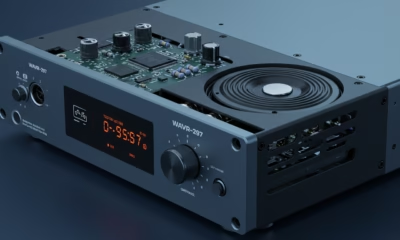EDUCATION
Carbon: The Element of Life and Innovation

Carbon is one of the most versatile and essential elements in the universe. It is the building block of life, the foundation of modern technology, and a key player in the Earth’s climate system. From the diamonds in jewellery to the graphite in pencils, from the fuels that power our world to the DNA that defines our existence, carbon is everywhere. This article explores the multifaceted role of carbon, its significance in science and industry, and its impact on the environment and society.
The Chemistry of Carbon
Carbon is the sixth element in the periodic table, with the symbol C and an atomic number of 6. It is a non-metal that can form four covalent bonds, allowing it to create a vast array of compounds. This unique ability to bond with other elements, including itself, makes carbon the backbone of organic chemistry.
Carbon exists in several allotropes—different forms of the same element with distinct structures and properties. The most well-known allotropes are diamond, graphite, and graphene. Diamond, with its tetrahedral structure, is the hardest natural material and a symbol of luxury. Graphite, composed of layers of carbon atoms arranged in hexagons, is soft and conductive, making it ideal for use in pencils and batteries. Graphene, a single layer of graphite, is a revolutionary material with exceptional strength, conductivity, and flexibility, holding promise for future technologies.
Carbon in Nature and Life
Carbon is the cornerstone of life on Earth. It is a primary component of organic molecules, including carbohydrates, proteins, lipids, and nucleic acids. These molecules form the basis of all living organisms, from the smallest bacteria to the largest mammals. The carbon cycle, a natural process that involves the exchange of carbon between the atmosphere, oceans, soil, and living organisms, sustains life by regulating the Earth’s climate and providing the raw materials for growth and energy.
Photosynthesis, the process by which plants convert carbon dioxide (CO₂) and sunlight into glucose and oxygen, is a critical part of the carbon cycle. It not only produces the oxygen we breathe but also forms the foundation of the food chain. Respiration, decomposition, and combustion return carbon to the atmosphere, completing the cycle.
Carbon in Industry and Technology
Carbon’s versatility extends far beyond biology. It plays a central role in industry and technology, driving innovation and economic growth. Fossil fuels—coal, oil, and natural gas—are carbon-based energy sources that have powered human civilisation for centuries. While they have enabled remarkable progress, their combustion releases CO₂, contributing to climate change and environmental degradation.
In recent decades, carbon has become a focal point of technological advancement. Carbon fibre, a lightweight and incredibly strong material, is used in aerospace, automotive, and sports equipment. Carbon nanotubes, cylindrical structures with extraordinary mechanical and electrical properties, have potential applications in electronics, medicine, and energy storage. Graphene, often hailed as a “wonder material,” is being explored for use in flexible screens, supercapacitors, and water filtration systems.
Carbon is also at the heart of renewable energy technologies. Solar panels, wind turbines, and batteries rely on carbon-based materials for efficiency and durability. Carbon capture and storage (CCS) technologies aim to reduce CO₂ emissions from industrial processes by capturing and storing the gas underground or using it to produce synthetic fuels.
Carbon and Climate Change
While essential for life, its overabundance in the atmosphere poses a significant threat to the planet. The burning of fossil fuels, deforestation, and industrial activities have increased atmospheric CO₂ levels, leading to global warming and climate change. The Intergovernmental Panel on Climate Change (IPCC) has warned that without drastic reductions in emissions, the Earth will face severe consequences, including rising sea levels, extreme weather events, and biodiversity loss.
Addressing this challenge requires a multifaceted approach. Transitioning to renewable energy sources, improving energy efficiency, and reforestation are critical steps in reducing emissions. Pricing mechanisms, such as taxes or cap-and-trade systems, can incentivise businesses and individuals to adopt cleaner practices. Innovations in capture and utilisation (CCU) offer the potential to turn CO₂ into valuable products, such as building materials or fuels.
The Future of Carbon
As the world grapples with the dual challenges of climate change and sustainable development, it will remain a central focus of scientific research and innovation. The development of carbon-neutral technologies, such as hydrogen fuel cells and bioenergy with capture and storage (BECCS), holds promise for a greener future. Advances in materials science, such as the creation of superconductors or quantum dots derived from it, could revolutionise industries and improve quality of life.
At the same time, the ethical and social implications of technologies linked to it must be carefully considered. Ensuring equitable access to clean energy, protecting vulnerable communities from the impacts of climate change, and promoting responsible consumption are essential for building a sustainable and just world.
Conclusion: The Element of Possibility
It is more than just an element; it is a symbol of life, innovation, and resilience. With its unique properties, it has shaped the natural world and driven human progress, from ancient civilisations to the modern era. As we face 21st-century challenges, it will remain central to shaping our future. By harnessing its potential responsibly, we can balance technological advancement with environmental stewardship. Through cutting-edge research, sustainable practices, and global cooperation, its story offers endless possibilities. Ultimately, the choices we make today will define the legacy we leave for generations to come.
BLOG
Oliver 550 Carburetor: Performance, Maintenance & Tuning Tips

The Oliver 550 tractor remains a respected workhorse in the agricultural world, valued for its strength, durability, and consistent performance. At the core of its engine lies a key component—the carburetor. Specifically, the oliver 550 carburetor plays a crucial role in delivering the correct air-to-fuel mixture needed for combustion. Without this proper blend, the engine can struggle, underperform, or even fail to start. Therefore, understanding how the carburetor works is essential for anyone maintaining or restoring this classic tractor.
To begin with, the oliver 550 carburetor regulates airflow and fuel input into the engine’s cylinders. As the engine demands change, the carburetor adjusts accordingly to maintain efficiency. Consequently, when the carburetor is clean and well-tuned, the tractor runs smoothly and responds well under load. However, over time, various issues may arise. Dirt buildup, fuel residue, or worn components can lead to poor fuel delivery, rough idling, or hard starts. In such cases, cleaning or rebuilding the oliver 550 carburetor often restores proper function.
Moreover, tuning the carburetor correctly improves both performance and fuel economy. While this may seem complex, following step-by-step guides simplifies the process. Additionally, routine inspections can help catch issues early, before they lead to larger problems. Whether you’re plowing, hauling, or showing off your restored machine, a properly functioning Oliver 550 carburetor makes a noticeable difference.
In summary, maintaining the Oliver 550 carburetor is not only important—it’s vital. Through regular care, careful tuning, and timely rebuilds, you ensure reliable operation and extend the life of your tractor.
In this guide, we’ll cover:
✔ How the Oliver 550 carburetor works
✔ Common problems & troubleshooting
✔ Step-by-step maintenance & rebuild tips
✔ Performance tuning for better efficiency
Understanding the Oliver 550 Carburetor
The carburetor plays a crucial role in the performance of any internal combustion engine. Specifically, it ensures that air and fuel are mixed in the proper ratio before this mixture is delivered to the engine’s combustion chamber. Without this precise blend, the engine would either run too rich, causing excess fuel consumption, or too lean, potentially leading to damage. Consequently, a reliable carburetor is essential for efficient engine operation. In the case of the Oliver 550 tractor, the carburetor is especially important, since this model depends heavily on consistent performance in farming and utility work.
Over the years, the Oliver 550 carburetor has come in different configurations. Typically, it uses either a Zenith or Marvel-Schebler design, depending on the specific model year. While both types are known for their reliability, there are minor differences in tuning and maintenance. For example, early versions often featured the Marvel-Schebler carburetor, whereas later ones began incorporating the Zenith version. Therefore, knowing which carburetor is on a particular Oliver 550 is vital when ordering parts or performing adjustments.
Moreover, the Oliver 550 carburetor is relatively easy to service. Because of its straightforward design, cleaning or rebuilding it can restore lost power and improve fuel efficiency. However, proper synchronization between the air and fuel mixture must still be maintained. Otherwise, performance issues may persist. Additionally, since the Oliver 550 carburetor can wear over time, periodic inspections are recommended. Not only do these checks help maintain engine health, but they also prevent sudden breakdowns in the field.
In summary, whether you’re troubleshooting engine issues or simply performing routine maintenance, understanding the function and specifics of the Oliver 550 carburetor remains a key part of keeping this classic tractor running smoothly.
Key Components:
-
Float Bowl – Regulates fuel levels
-
Main Jet – Controls fuel flow at high speeds
-
Idle Jet – Manages fuel at low RPM
-
Throttle & Choke Plates – Adjust air intake
-
Gaskets & Seals – Prevent fuel leaks
Common Carburetor Problems & Fixes
1. Hard Starting or No Start
-
Possible Causes: Clogged jets, stuck float, bad gaskets
-
Solution: Clean carburetor, check fuel flow, replace worn parts
2. Poor Idle or Stalling
-
Possible Causes: Dirty idle circuit, vacuum leaks
-
Solution: Adjust idle screw, inspect for air leaks
3. Black Smoke (Rich Mixture)
-
Possible Causes: Overly rich fuel mixture, stuck choke
-
Solution: Tune air-fuel ratio, check choke operation
4. Engine Surging or Hesitation
-
Possible Causes: Fuel starvation, clogged filter
-
Solution: Clean fuel lines, replace filter
Step-by-Step Carburetor Rebuild
If your Oliver 550 is running poorly, a carburetor rebuild may be necessary. Here’s a simplified process:
Tools Needed:
-
Carburetor rebuild kit
-
Screwdrivers, wrenches
-
Carb cleaner & compressed air
-
New gaskets & seals
Steps:
-
Remove the carburetor from the engine.
-
Disassemble carefully, noting jet sizes and gasket positions.
-
Soak parts in carb cleaner to remove varnish buildup.
-
Blow out passages with compressed air.
-
Replace jets, gaskets, and seals with new ones.
-
Reassemble & reinstall, then adjust idle and mixture screws.
Performance Tuning Tips
-
Adjust the idle screw for smooth low-RPM operation.
-
Fine-tune the main jet for optimal high-speed performance.
-
Check the float level to prevent flooding or starvation.
-
Upgrade to an ethanol-resistant kit if using modern fuel.
Final Thoughts
A well-maintained carburetor is essential for the reliable operation of your tractor. Specifically, the Oliver 550 carburetor plays a key role in ensuring smooth performance whether you’re working hard in the fields or proudly displaying your tractor at a local rally. First and foremost, proper care keeps the engine running efficiently. In addition, it reduces fuel waste, prevents hard starts, and minimizes the risk of stalling. Therefore, taking the time to clean, tune, and occasionally rebuild your carburetor is not only beneficial—it’s necessary.
To begin with, regular cleaning of the Oliver 550 carburetor helps remove dirt, varnish, and debris that can clog jets and passages. As a result, fuel flows more freely, which leads to better combustion. Furthermore, proper tuning ensures the air-to-fuel mixture remains balanced under different loads and temperatures. Although tuning may seem technical at first, it becomes easier with experience. Meanwhile, rebuilding the oliver 550 carburetor should be considered when cleaning and tuning no longer restore performance. Fortunately, rebuild kits are widely available, and most come with detailed instructions.
Additionally, choosing quality parts is important. While some may consider generic kits, it’s usually better to rely on reputable sources. As such, tractor restoration specialists often carry dependable components. Likewise, trusted online suppliers provide a convenient alternative. Whether you prefer local service or digital convenience, options exist for every need. Also, don’t forget to double-check compatibility before ordering.
In conclusion, regular maintenance not only prolongs the life of the Oliver 550 carburetor but also ensures optimal performance throughout every season. Even though the process requires time and effort, the long-term benefits far outweigh the inconvenience. Ultimately, caring for your oliver 550 carburetor is a worthwhile investment in the reliability and heritage of your machine.
EDUCATION
Joinpd.com: The Ultimate Guide to Interactive Learning with Pear Deck

Introduction
The modern classroom is undergoing a revolution, with interactive learning tools reshaping traditional education methods. At the forefront of this transformation is joinpd.com, the student-facing gateway to Pear Deck’s innovative presentation platform. This powerful tool bridges the gap between teachers and students, creating dynamic, two-way learning experiences that captivate digital-native learners.
Unlike passive lecture formats, joinpd.com facilitates real-time participation through its seamless integration with Google Slides and Microsoft PowerPoint. Educators can embed interactive elements like quizzes, polls, and drawing activities directly into their presentations, while students engage through any internet-connected device. The platform’s intuitive design requires minimal technical knowledge, making digital adoption accessible for all age groups.
What sets joinpd.com apart is its ability to provide immediate feedback. Teachers gain valuable insights into student comprehension the moment responses are submitted, allowing for on-the-spot adjustments to instruction. This responsive approach has proven particularly valuable in hybrid learning environments, where maintaining engagement across physical and virtual classrooms presents unique challenges.
As education continues evolving in our technology-driven world, joinpd.com represents more than just another edtech tool – it embodies the shift toward participatory, student-centred learning that prepares young minds for the collaborative workplaces of tomorrow.
This comprehensive guide explores everything you need to know about Joinpd.com, including:
- What Joinpd.com is and how it works
- How teachers and students use it for interactive learning
- Step-by-step instructions for joining a Pear Deck session
- Key features and benefits of the platform
- Common troubleshooting tips
- The future of interactive learning with Pear Deck
By the end of this article, you’ll have a complete understanding of how Joinpd.com enhances classroom engagement and why it has become a favourite among educators.
What Is Joinpd.com?
Joinpd.com is the student access point for Pear Deck, a Google Slides and Microsoft PowerPoint add-on that allows teachers to create interactive, real-time lessons. Students join sessions using a unique code, enabling them to participate in quizzes, polls, and discussions directly from their devices.
How Does Joinpd.com Work?
- Teachers Create Interactive Lessons – Using Pear Deck, educators design presentations with embedded questions, drag-and-drop activities, and drawing prompts.
- Students Join via Joinpd.com – Teachers share a session code, and students enter it at joinpd.com to access the lesson.
- Real-Time Engagement – Students respond to prompts, and teachers can monitor participation instantly, making lessons more dynamic.
This seamless integration of technology into classrooms promotes active learning and instant feedback.
How to Use Joinpd.com as a Student
Joining a Pear Deck session is simple:
Step-by-Step Guide
- Get the Session Code – Your teacher will provide a unique 5-6 letter code.
- Go to Joinpd.com. Open a browser and visit https://joinpd.com.
- Enter the Code – Type in the code and click “Join Session”.
- Enter Your Name – Use your real name (or as instructed by your teacher).
- Start Participating – Answer questions, complete activities, and engage in real time!
Note: You don’t need an account—just the session code.
Key Features of Pear Deck & Joinpd.com
Pear Deck’s interactive tools make learning immersive. Here’s what makes it stand out:
1. Live Student Responses
- Students answer questions in real time, and teachers can display anonymous responses for discussion.
2. Interactive Question Types
- Multiple Choice – Quick quizzes for instant feedback.
- Text Responses – Open-ended discussions.
- Draggable & Drawing Tools – Great for math and science lessons.
3. Google & Microsoft Integration
- Works seamlessly with Google Slides and PowerPoint Online.
4. Teacher Dashboard
- Educators monitor participation, track progress, and adjust lessons on the fly.
5. Student-Paced Mode
- Allows learners to review lessons independently, ideal for homework or revisions.
Benefits of Using Joinpd.com in Education
1. Boosts Engagement
- Interactive slides keep students attentive and involved.
2. Encourages Participation
- Shy students can contribute anonymously, increasing inclusivity.
3. Provides Instant Feedback
- Teachers identify learning gaps immediately and adjust instruction.
4. Works for Remote & Hybrid Learning
- Perfect for virtual classrooms, ensuring no student is left behind.
5. Saves Teachers Time
- Automated grading and templates reduce prep work.
Troubleshooting Common Issues
1. Invalid or Expired Code
- Check with your teacher—codes are case-sensitive and time-limited.
2. Browser Compatibility Issues
- Use Chrome, Edge, or Firefox for best performance.
3. Slow Loading or Lag
- Refresh the page or check your internet connection.
4. Name Not Accepted
- Some schools require student emails—confirm with your instructor.
The Future of Joinpd.com & Pear Deck
As digital learning evolves, Pear Deck continues to innovate with:
- AI-Powered Insights – Automated analytics to personalise learning.
- More Gamification – Badges and rewards to motivate students.
- Deeper LMS Integrations – Enhanced compatibility with Schoology, Canvas, etc.
With these advancements, Joinpd.com will remain a leading tool for interactive education.
Conclusion
Joinpd.com revolutionises classrooms by converting passive lessons into engaging experiences. First, it empowers teachers to create dynamic presentations with real-time interactions. Additionally, students actively participate through polls, quizzes, and discussions. Moreover, the platform works seamlessly for both in-person and remote learning.
For instance, teachers can instantly assess understanding using live responses. Similarly, students gain confidence by contributing anonymously. Furthermore, the integration with Google Slides simplifies lesson creation. However, occasional technical issues may arise. Therefore, using compatible browsers ensures smooth operation.
As a result, classrooms become more inclusive and collaborative. Meanwhile, the instant feedback helps educators adjust instruction. Ultimately, joinpd.com makes learning more effective and enjoyable. In conclusion, this tool bridges the gap between teaching and engagement. By following best practices, educators maximise its benefits. Consequently, students develop deeper understanding through active participation.
Joinpd.com isn’t just a tool—it’s the future of interactive education. Ready to join the interactive learning revolution? Visit Joinpd.com today and experience the future of education!
BUSINESS
$40 an Hour is How Much a Year Annually?

When people search for income breakdowns, one of the most common questions is, “$40 an hour is how much a year?” This calculation is essential for job seekers, freelancers, and anyone evaluating job offers. Knowing the annual, monthly, weekly, and even daily earnings from an hourly rate provides clarity for budgeting, planning savings, and understanding financial goals.
If you earn $40 per hour, your income can add up quickly, but it depends on how many hours you work per week and whether those hours are consistent. In this guide, we’ll break down the yearly, monthly, weekly, and daily earnings of $40 an hour. We’ll also explore how this compares to average salaries, the lifestyle it can support, and financial tips for maximizing this income.
$40 an Hour – The Yearly Calculation
The simplest way to calculate yearly salary from an hourly wage is:
Hourly Rate × Hours per Week × Weeks per Year = Annual Salary
If you assume a standard full-time schedule of 40 hours per week and 52 weeks per year, here’s the math:
-
$40 × 40 hours = $1,600 per week
-
$1,600 × 52 weeks = $83,200 per year
So, if you work full time at $40 an hour, you can expect to earn $83,200 annually before taxes.
Breaking it Down Further
Monthly Income at $40 an Hour
Since months vary in length, an exact monthly salary can differ slightly. However, if you divide the annual figure by 12:
-
$83,200 ÷ 12 = $6,933.33 per month
This is a strong monthly income that can comfortably cover housing, food, transportation, and savings in many areas, although lifestyle costs vary depending on location.
Weekly Income at $40 an Hour
As calculated earlier:
-
$40 × 40 hours = $1,600 per week
If you occasionally work overtime, this number increases significantly. For example, working 45 hours instead of 40 hours per week raises your weekly earnings to $1,800.
Daily Income at $40 an Hour
If you work 8-hour days, the calculation is straightforward:
-
$40 × 8 = $320 per day
This is useful for freelancers or contractors who want to estimate daily earnings when planning projects.
Adjustments for Part-Time Work
Not everyone works 40 hours a week. Here’s how $40 an hour translates at different weekly workloads:
-
20 hours per week → $800 per week → $41,600 per year
-
30 hours per week → $1,200 per week → $62,400 per year
-
50 hours per week → $2,000 per week → $104,000 per year
This shows how flexible income can be at $40 an hour depending on your schedule.
After-Tax Income at $40 an Hour
It’s important to note that the figures above are before taxes. Your take-home pay depends on your tax bracket, state taxes (if applicable), and deductions like healthcare, retirement contributions, and Social Security.
On average, U.S. federal income taxes can range from 12% to 24% for this income level. That means your after-tax yearly income might fall between $63,000 and $72,000, depending on your filing status and location.
How $40 an Hour Compares Nationally
To put this into perspective, let’s compare $40 an hour to the median U.S. income:
-
According to the U.S. Bureau of Labor Statistics, the median annual wage in 2024 was around $48,000–$50,000.
-
At $40 per hour, earning $83,200 a year, you’re making significantly more than the national average.
This places you in a comfortable income bracket, often considered upper middle class in many parts of the country.
Jobs That Commonly Pay $40 an Hour
Several industries offer hourly wages around or above $40. Some examples include:
-
Healthcare – Registered nurses, dental hygienists, and radiology technologists often earn $40+ per hour.
-
Skilled Trades – Electricians, plumbers, and construction managers can reach this pay level with experience.
-
Tech Industry – IT consultants, software developers, and cybersecurity specialists may start higher.
-
Education – College professors, corporate trainers, and specialized tutors sometimes earn around $40/hour.
-
Freelancing/Consulting – Writers, designers, and business consultants often charge hourly rates above $40.
Cost of Living and $40 an Hour
How far $40 an hour goes depends on where you live.
-
High-Cost Cities (New York, San Francisco, Los Angeles): While $83,200 is a solid salary, housing and living costs may take a larger chunk of your income.
-
Moderate-Cost Cities (Dallas, Atlanta, Denver): You’ll likely live comfortably with room for savings.
-
Low-Cost Areas (Midwest, small towns): $40 an hour can feel like a luxury, allowing for investments, travel, or early retirement savings.
Lifestyle Possibilities with $40 an Hour
If you manage this income well, you can achieve:
-
Homeownership – Depending on location, you could afford a mortgage on this salary.
-
Savings and Investments – Putting aside 15–20% of income can build long-term wealth.
-
Travel and Leisure – With over $6,900 monthly, there’s room in the budget for vacations and hobbies.
-
Debt Freedom – Paying off student loans, car loans, or credit card balances is more manageable.
Budgeting Tips for a $40/Hour Income
Earning $40 an hour is a strong financial position, but smart money management is key. Here are some strategies:
-
Follow the 50/30/20 Rule
-
50% of income → Needs (housing, food, utilities)
-
30% → Wants (entertainment, shopping, travel)
-
20% → Savings (retirement, investments, emergency fund)
-
-
Automate Savings
Set up automatic transfers to retirement or savings accounts. -
Avoid Lifestyle Inflation
Just because you make more doesn’t mean you should spend more. -
Plan for Taxes
If self-employed, set aside money for quarterly tax payments.
Is $40 an Hour a Good Wage?
In most cases, yes. Earning $83,200 annually positions you above the median income, giving you financial flexibility. While it might not feel as abundant in cities with extremely high housing costs, it’s still a strong wage nationwide.
For individuals supporting a family, this income can provide stability and opportunities. For single earners, it can mean significant disposable income and faster wealth-building potential.
Conclusion
So, how much is $40 an hour in a year? If you work full-time—typically 40 hours per week for 52 weeks—that comes out to $83,200 annually before taxes. To break it down further, this equals roughly $6,933 per month, about $1,600 per week, or close to $320 per day. These figures assume a standard work schedule without unpaid time off, so actual earnings may vary depending on vacation, holidays, or overtime.
Of course, gross income and take-home pay are not the same. Federal and state taxes, Social Security, and Medicare will reduce your final paycheck. Still, an hourly wage of $40 remains significantly above the U.S. national average, providing financial stability and room for a comfortable lifestyle. With careful budgeting, it can support essential expenses like housing, food, transportation, and healthcare while still leaving space for discretionary spending and savings.
Beyond covering daily needs, earning $40 an hour creates opportunities for long-term security. You can build an emergency fund, save for retirement, or set aside money for large goals such as buying a home or traveling. This level of income also gives you flexibility when managing debt or investing for the future.
Whether you’re evaluating a job offer, setting freelance rates, or considering a career shift, knowing how hourly pay translates into annual salary is essential. It allows you to realistically compare opportunities, plan for expenses, and make smarter financial choices. At $40 an hour, you’re looking at more than just a paycheck—you’re building a foundation for stability, growth, and future success.
-

 EDUCATION4 months ago
EDUCATION4 months agoHCOOCH, CH₂, and H₂O: Key Molecules in Chemistry and Life
-

 BLOG3 months ago
BLOG3 months agoTeenthailand_11_SC1: Unveiling Thailand’s Youth Culture
-

 BLOG4 months ago
BLOG4 months agoTheapknews.shop Health: Your Gateway to Wellness and Tech
-

 EDUCATION6 months ago
EDUCATION6 months agoQawerdehidom: Origins, Principles, and Modern Applications
-

 ENTERTAINMENT4 months ago
ENTERTAINMENT4 months agoWhat Are Coachella Co-Chairs: The Visionaries Behind the Iconic Festival
-

 BLOG7 months ago
BLOG7 months agoPO18: A Comprehensive Guide to Its Meaning and Applications
-

 EDUCATION4 months ago
EDUCATION4 months agoNowCollege 1v1: Redefining Personalized Higher Education
-

 ENTERTAINMENT7 months ago
ENTERTAINMENT7 months agoKuttymovies7: A Comprehensive Look at the Controversial Movie Piracy Platform












